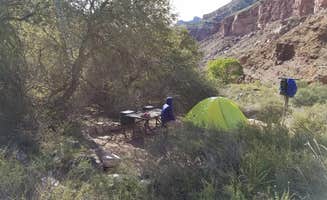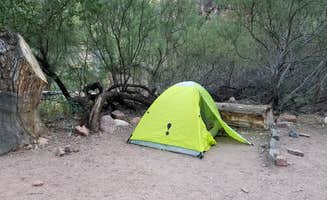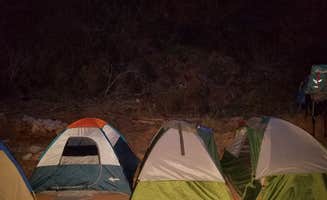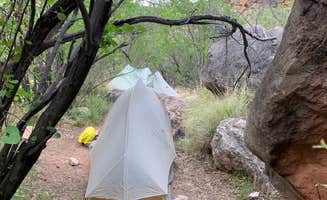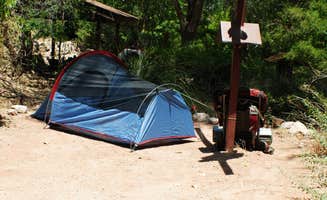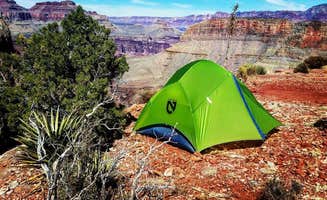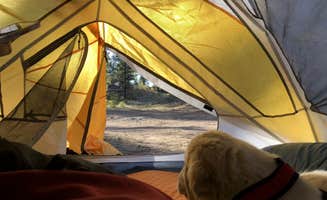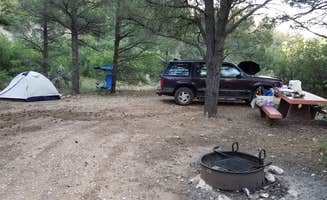Dispersed tent camping sites near North Rim, Arizona provide access to the Grand Canyon's less-visited northern sections. At 8,000 feet elevation, the North Rim camping areas experience cooler temperatures than South Rim locations, with summer highs typically in the 70s-80s°F and potential for freezing nights even in late spring or early fall. Forest roads in the Kaibab National Forest offer primitive camping with variable terrain conditions that often require high-clearance vehicles.
What to do
Hike to viewpoints: From Saddle Canyon Outlook North Rim Dispersed, access unique canyon perspectives. "The views are literally indescribable. I sat there and stood there for 12 hours watching the Grand Canyon change every 30 seconds due to clouds and sun," notes Steve M., who recommends it "if you can get there because it was an incredibly memorable experience."
Watch wildlife: North Rim camping areas provide opportunities to observe local animals in their natural habitat. "We had a huge bull elk with his cows walk right past our camp," reports Hugh M. at Forest Service Road 328 Dispersed, highlighting an encounter you might experience while tent camping in this area.
Stargaze after sunset: The remote North Rim area offers minimal light pollution for night sky viewing. Rose G. mentions arriving "shortly after sunset" at Forest Service Road 328, while many campers note the peaceful, quiet evenings that provide ideal stargazing conditions away from developed areas.
What campers like
Isolation with security: Many tent campers appreciate feeling remote without complete solitude. Nicole K. describes her experience at Forest Service Road 328: "Been here couple days now. Plenty of room and other campers around. Feel isolated but not totally alone. Fire pits around as well. 10 minutes outside the park."
Proximity to park entrance: Most dispersed sites offer quick access to Grand Canyon National Park. "Perfect spot close to the entrance... Closest free camping to the entrance of the grand canyon," explains Cole P., while Ethan B. advises: "If you stay here on the weekends and plan to go to the park, get up early. The lines are insane!"
Creek access in canyon sites: For those hiking into the canyon, water features provide welcome relief. At Cottonwood Campground, creek access offers respite from heat. One camper appreciates how "sites are further apart than the other main corridor campgrounds," making it less crowded than other canyon options.
What you should know
Rough access roads: Most North Rim dispersed sites require navigating challenging forest roads. Steve M. cautions about FR610 near Saddle Canyon: "Do not try FR610 unless you have a crazy Bronco or Range Rover or Hummer! I damn near got stuck all night there and just made it back because there are no turnaround points, especially for anything over 22 ft."
Variable site availability: Even during busy periods, dispersed sites typically have space. "We never ran into not finding a spot and we got in pretty late," notes Ethan B., while another camper describes FR328: "Long road with lots of pull offs. I doubt you would have any issues ever finding a spot here no matter how busy it gets."
Permit requirements: Canyon sites like Bright Angel Campground require advance planning. Jorge G. emphasizes: "Permits ARE required and ENFORCED STRICTLY: do NOT hike down expecting to find open space without one. The permitting process is a whole other thing."
Tips for camping with families
Store food properly: Wildlife encounters require proper storage at all campgrounds. In Phantom Ranch and canyon areas, Jorge G. warns: "Critters: Watch out for ringtails, mice, and ravens; they're bold and persistent. Keep all food inside the ammo cans."
Choose rim sites in summer: Canyon temperatures can reach dangerous levels for children. "Weather can be extreme, triple-digit heat in summer, freezing nights in winter," notes Jorge G. about below-rim camping, making dispersed forest camping at higher elevations safer for families in summer months.
Plan for communications limitations: No cell service exists in most camping areas. Jorge G. advises: "There's no cell service here. Plan to disconnect entirely. Emergencies are serious as this is a very remote area. Be fit, be prepared, be tough."
Tips from RVers
Vehicle clearance matters: Forest roads require appropriate vehicles. At Saddle Canyon Outlook, Steve M. explains it's "not for the faint of heart or low riding rigs," noting his "25 ft total car and Teardrop trailer length and it was challenging but I found one spot."
Know your turnaround options: Forest roads often lack proper turning areas for larger vehicles. "There are no turnaround points, especially for anything over 22 ft," cautions Steve M. about accessing remote dispersed camping areas near the North Rim.
Prepare for dust: Unpaved forest roads create dusty conditions around camping areas. One camper at Havasupai Gardens Campground notes: "There are a few spots along the service road. A lot of dust there," highlighting the need to protect sensitive equipment and food from fine particles.


